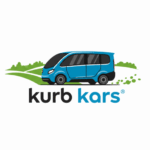
This report details the integration of a Tesla autonomous taxi fleet, utilizing the advanced Full Self-Driving (FSD) V15 system, with the Kurb Kars Rural Infrastructure Operating System (RIOS). It estimates the fleet size, calculates the charging cost per leg in Uganda, and outlines the critical interface provided by RIOS.
Part 1: Fleet Sizing and Operational Assumptions
The successful deployment of a Robo-Taxi service is dependent on achieving a high vehicle utilization rate. The Tesla fleet will be used to provide ‘last-mile’ connectivity and general mobility services, aligning with Kurb Kars’ mission to create autonomous, resilient logistics.
1.1 Key Operational Metrics
| Metric | Assumption/Basis | Value |
| Target Rides per Day | A representative commercial scale for a large urban market (Kampala). | 2,000 rides/day |
| Average Trip Length (Leg) | Based on regional rideshare data (Africa average trip time of ∼24 min∼24 min) and urban taxi metrics. | 10 km per leg |
| Average Daily Vehicle Mileage | Typical taxi/rideshare vehicle operation in developing countries. | ∼240 km/day∼240 km/day[1] |
| Fleet Availability | Accounts for charging, maintenance, and off-shift time (24/7 operation is targeted). | 80%80% |
1.2 Required Tesla Fleet Size Calculation
Assuming each Tesla vehicle is operational for
∼240 km∼240 kmper day, and the average trip is
10 km10 km, each vehicle can perform approximately 24 paid legs per day.
Daily Trips per Vehicle=240 km/day10 km/trip=24 trips/dayDaily Trips per Vehicle=10 km/trip240 km/day=24 trips/dayRequired Fleet Size=Target Rides per DayTrips per Vehicle per Day×Availability RateRequired Fleet Size=Trips per Vehicle per Day×Availability RateTarget Rides per DayRequired Fleet Size=2,000 rides24 trips/vehicle×0.80≈105 Tesla VehiclesRequired Fleet Size=24 trips/vehicle×0.802,000 rides≈105 Tesla VehiclesThe Robo-Taxi service would require an estimated fleet of 105 Tesla vehicles to support a volume of 2,000 rides per day.
Part 2: Charging Cost Per Leg in Uganda
The charging cost is calculated using a standard Tesla Model 3 Long Range as a proxy, considering local electricity costs in Uganda.
2.1 Key Financial and Efficiency Metrics
| Metric | Assumption/Basis | Value |
| Uganda Electricity Rate | Average cost of grid electricity, used as a reference tariff for the microgrid. | ∼700 UGX/kWh∼700 UGX/kWh (∼$0.19/kWh∼$0.19/kWh)[2] |
| EV Energy Consumption | Industry standard for a sedan-sized EV. | 0.18 kWh/km0.18 kWh/km |
| Energy for 300 km Range | Confirmed local rate in Uganda. | Shs15,000 - 20,000Shs15,000 - 20,000[3][4][5] |
| Average Trip Length (Leg) | From Part 1. | 10 km10 km |
2.2 Cost Calculation per Leg
We can derive the cost per kilometer using the local charging rate provided:
Cost per km=Average Charging CostRange in km=17,500 UGX300 km≈58.3 UGX/kmCost per km=Range in kmAverage Charging Cost=300 km17,500 UGX≈58.3 UGX/kmCharging Cost per Leg=Cost per km×Average Trip LengthCharging Cost per Leg=Cost per km×Average Trip LengthCharging Cost per Leg=58.3 UGX/km×10 km≈583 UGXCharging Cost per Leg=58.3 UGX/km×10 km≈583 UGXThe direct electrical charging cost for a standard
10 km10 kmrobo-taxi leg in Uganda is approximately 583 Ugandan Shillings (UGX) (equivalent to
∼$0.16 USD∼$0.16 USD). This represents a significant cost advantage over conventional internal combustion engine taxis.
Part 3: Kurb Kars RIOS Integration and FSD V15 Interface
The Kurb Kars platform, powered by the Rural Infrastructure Operating System (RIOS), provides the critical control layer that transforms a simple fleet of autonomous vehicles into an integrated, efficient component of the plasma gasification microgrid.
3.1 Interfacing with Tesla FSD V15
The integration specifically leverages the advanced capabilities of the Tesla FSD V15 system, which is designed to navigate the highly complex, non-standard urban and semi-rural environments typical of markets like Uganda[1].
| RIOS Responsibility | Action and Value Add |
| Dynamic Geofencing & Mission Control | RIOS provides the high-level mission directives. It takes passenger requests, prioritizes them based on demand and energy, and passes the optimized route to the FSD V15 system. It can also enforce geo-fencing limits to prevent the FSD system from operating in restricted or overly complex zones that exceed its current safety profile in the new market. |
| Non-Standard Road Data Synthesis | RIOS continuously ingests real-time video/sensor data from the FSD V15 cameras and fuses it with its own proprietary mesh network data. This creates a more detailed, localized map (Digital Twin) for non-standard roads, traffic signals, and informal congestion, which enhances the FSD V15 system’s ability to operate in challenging ‘unmapped’ areas. |
| Redundancy and Safety Overlay | RIOS acts as a safety-of-life (SOL) communication layer via its resilient mesh network. In the event of primary Tesla connectivity failure, RIOS maintains a minimal data link for emergency diagnostics, remote intervention, and asset tracking, ensuring no vehicle is ‘lost’ in the field. |
3.2 Intelligent Energy Integration (Microgrid DSM)
The most critical function of Kurb Kars is Demand-Side Management (DSM) for the microgrid power generated by the solar PV and Syngas-to-Electricity (STE) systems.
- Load Shifting: RIOS is responsible for shifting the high-power demand of the
105105Tesla vehicles. Instead of allowing a simultaneous10 MW10 MWcharging spike when all vehicles return to the depot, RIOS implements a variable, scheduled charging profile. - Optimal Charging: Charging is prioritized during periods of STE surplus (the continuous
7.24 MWe7.24 MWeof net power from the plasma plant) or peak Solar PV output. - BESS Reduction: By eliminating the sudden, massive load spike, Kurb Kars prevents the need to size the plant’s BESS (Battery Energy Storage System) to handle the entire fleet’s peak charging demand. This allows the BESS to be sized only for essential plant startup and power quality (
1−2 MWh1−2 MWh), leading to a significant multi-million dollar reduction in CapEx.
Conclusion: The integration of the
105105-vehicle Tesla Robo-Taxi fleet, powered by FSD V15, provides a high-efficiency mobility solution with an ultra-low energy cost per leg in Uganda (
∼583 UGX∼583 UGX). Kurb Kars’ RIOS platform is the essential layer that enables this deployment, not only by providing the command and control for logistics but also by intelligently managing the fleet’s energy demand to protect and optimize the performance of the core Plasma Gasification microgrid.
Sourceshelp

